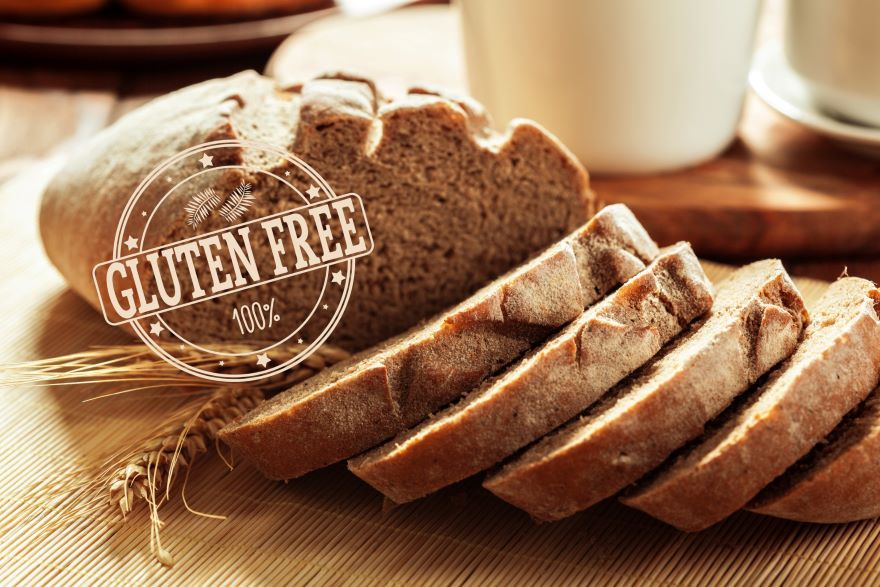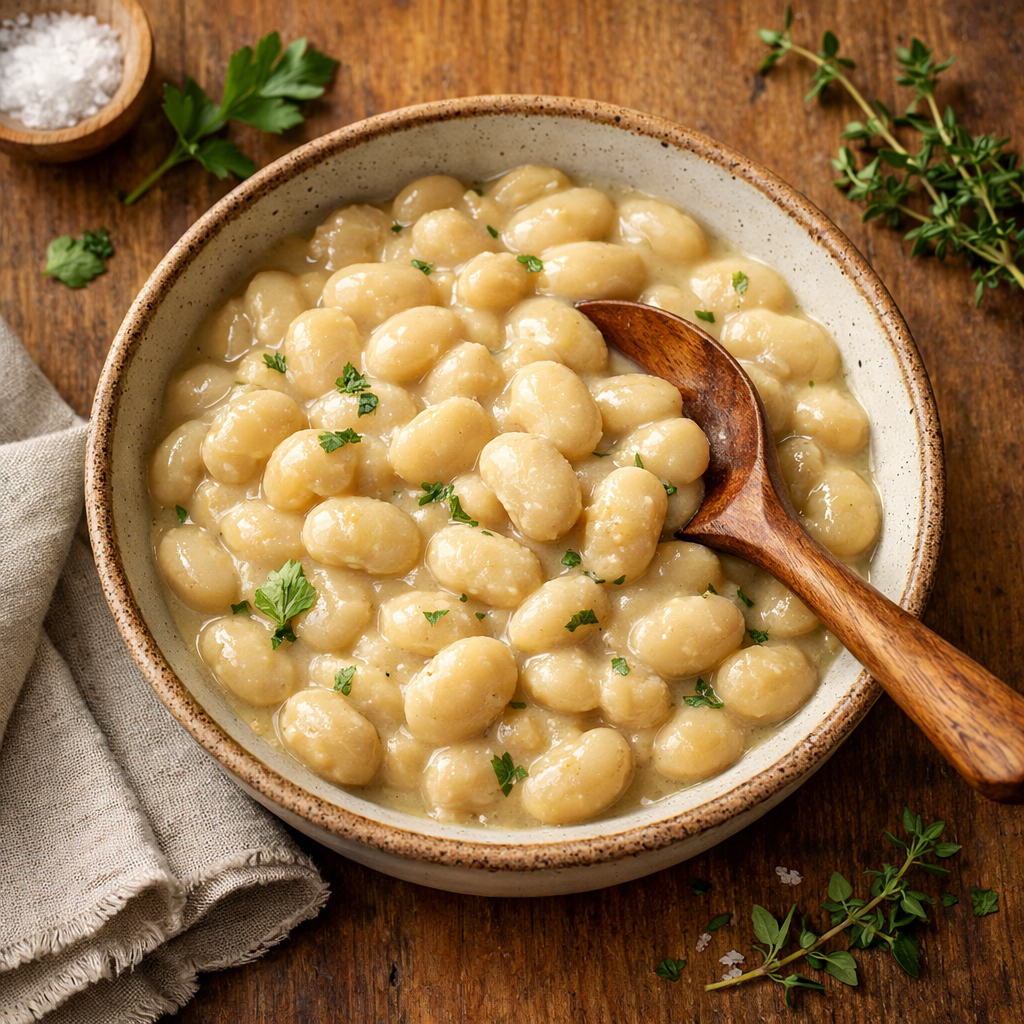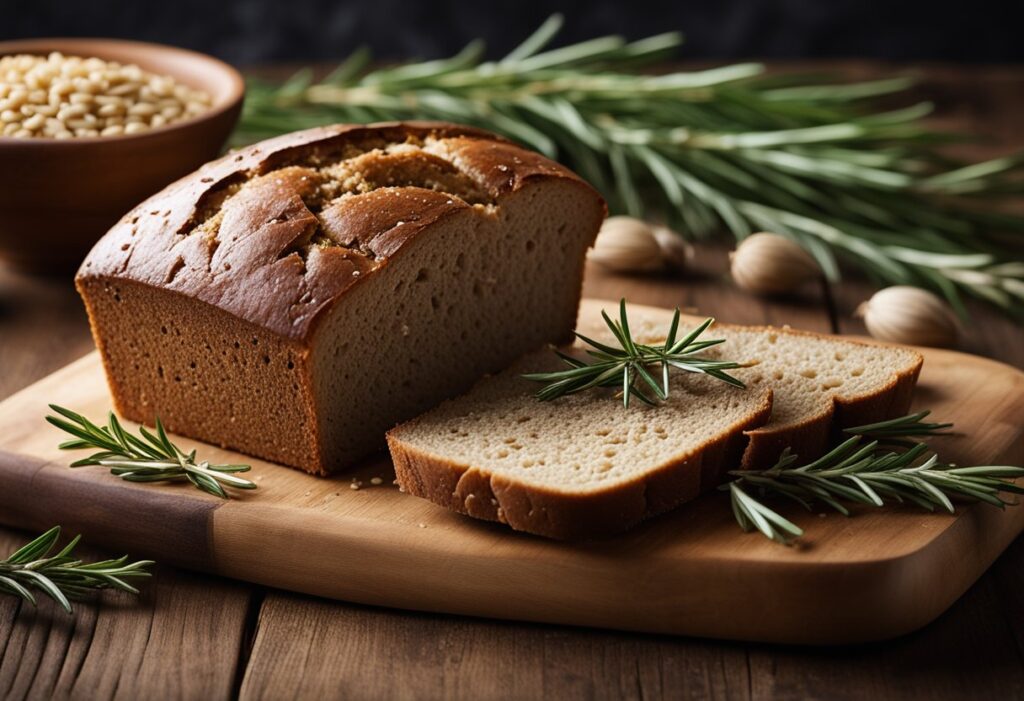
I never thought I’d be the person preaching about gluten-free rye bread, but here I am, completely transformed by this unexpected journey. Let me take you on a 30-day adventure that changed not just my diet, but my entire outlook on life.
The Bread Disaster That Changed Everything
Picture this: it’s a chilly autumn morning, and I’m standing in my kitchen, surrounded by a mess of flour, yeast packets, and a sad, dense lump that was supposed to be my first attempt at gluten-free rye bread. The air was thick with the smell of failure and disappointment. My grand plan to embrace a gluten-free lifestyle had quite literally fallen flat.
As I scraped the gluey mess into the trash, my eyes landed on a bag of gluten-free rye flour sitting innocently on the counter. Little did I know, that bag was about to become the hero of my story.
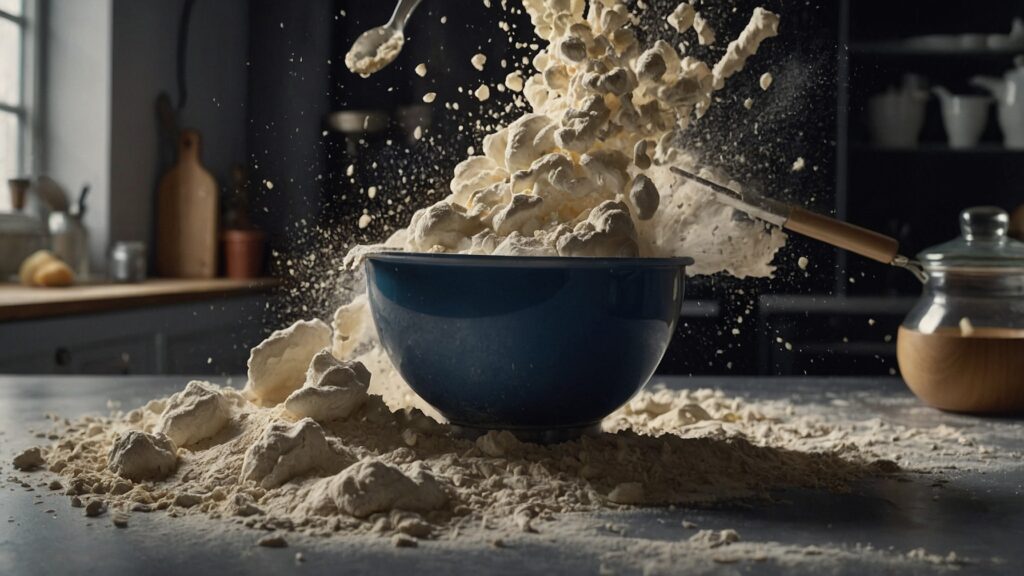
The Rye Revelation
Growing up, rye bread was a staple in our home. That dense, flavorful loaf was the foundation of countless sandwiches and the perfect accompaniment to warm bowls of soup. When I was diagnosed with celiac disease, I thought I’d said goodbye to rye forever. But in that moment of bread-making disaster, something clicked. I remembered reading about ancient grains and alternative flours. If people had been making bread for thousands of years without modern wheat, surely I could figure out a gluten-free version of my beloved rye!
With nothing left to lose (except maybe my sanity), I decided to give it another go. I measured out the gluten-free rye flour, mixed it with a blend of other gluten-free flours, and added the yeast with a silent prayer. The result? A loaf that, while not perfect, was surprisingly tasty and wonderfully reminiscent of the rye bread I’d been missing. It was a small victory, but it felt monumental.
The Comfort Loaf: My First Success
That first successful loaf became my go-to recipe, a comforting reminder that change is possible, even when it seems daunting.

Here’s what went into my “Comfort Rye”:
- 1 cup gluten-free rye flour
- 1 cup gluten-free all-purpose flour blend
- 1 teaspoon xanthan gum
- 1 tablespoon active dry yeast
- 1 tablespoon caraway seeds
- 1 teaspoon salt
- 1 cup warm water
- 2 tablespoons olive oil
- 1 tablespoon maple syrup
Mixing these ingredients and watching the dough come together in my KitchenAid Professional 600 Series Stand Mixer was like witnessing a small miracle. This powerful machine made the kneading process effortless, ensuring a perfectly mixed dough every time.
No products found.
The first time I pulled a golden-brown loaf from the oven, the aroma brought tears to my eyes. It wasn’t just bread; it was a piece of my past that I thought I’d lost forever.
The first bite was a moment of pure joy. The familiar tang of rye, the subtle crunch of caraway seeds – it was all there. But more than that, it represented a small step towards reclaiming my love for bread – one that I had taken all by myself.
I remember slicing into that first loaf, the knife crunching through the crisp crust to reveal a soft, airy interior. The smell of caraway and rye filled my kitchen, transporting me back to Sunday mornings at my grandmother’s house. As I took that first bite, I closed my eyes and savored the moment. It wasn’t exactly like the rye bread of my childhood, but it was close enough to bring a smile to my face and hope to my heart.
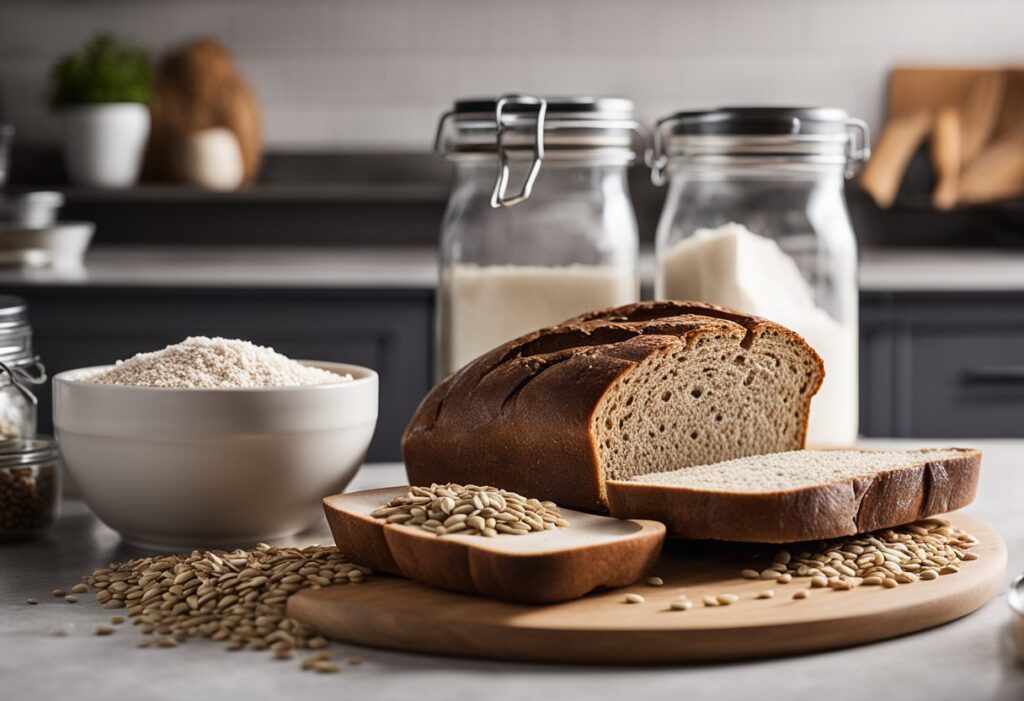
Overcoming the “It’s Not Real Rye” Mindset
Of course, the journey wasn’t all smooth sailing (or should I say, smooth kneading?). After a few weeks of my newfound gluten-free rye obsession, friends and family started giving me those looks. You know the ones – part pity, part skepticism, all judgment. “But it’s not real rye,” they’d say, or “Why bother? It can’t possibly taste the same.”
Those comments stung, I won’t lie. There were days when the temptation to give up and buy a regular loaf of rye nearly overwhelmed me. But each time I felt myself wavering, I’d remember how good I’d been feeling since starting my gluten-free journey. No more stomachaches, better sleep, even my skin was clearer. Was I really willing to give that up just because some people couldn’t understand my new way of eating?
Instead of caving to the pressure, I decided to get creative. If people thought gluten-free rye bread was a poor imitation, I’d show them just how wrong they were.
The Savory Surprise: Rye Meets Rosemary
My next bread experiment was born out of a desire to elevate my rye game. I’d been experimenting with herbs in my cooking and thought, “Why not in my bread?” The result was a fragrant, flavorful loaf that became my secret weapon for impressing skeptics:
- 1 cup gluten-free rye flour
- 1 cup gluten-free all-purpose flour blend
- 1 teaspoon xanthan gum
- 1 tablespoon active dry yeast
- 1 tablespoon fresh rosemary, finely chopped
- 1 teaspoon salt
- 1 cup warm water
- 2 tablespoons olive oil
- 1 tablespoon honey
I’ve found that precise measurements are crucial in gluten-free baking. My OXO Good Grips Stainless Steel Food Scale has been a game-changer, ensuring consistent results every time. It’s especially useful when working with different flours that can vary in weight.
- 11 lb capacity Scale measures ingredients in 1/8 oz (US) and 1 g (metric) increments for remarkable precision
- Zero function allows you to tare Scale before adding additional ingredients, ensuring accurate measurements for every recipe
- Easy to read display features large digital numbers with optional backlight, and a convenient meter shows how much of the Scale’s 11 lb capacity remains
- Innovative Display pulls away from base to prevent shadowing from large plates or bowls, thin profile allows for easy storage; Removable stainless steel platform can be hand washed
- Cord free design makes for a no fuss setup, 4 AAA batteries included
The first slice of this bread was a revelation. The earthy rye flavored perfectly with the aromatic rosemary, creating a loaf that was both comforting and sophisticated. It felt like a wake-up call for my taste buds and my creativity.
I started bringing this bread to potlucks and family dinners. The surprised exclamations – “This is gluten-free?” – were music to my ears. Slowly but surely, I was becoming the gluten-free bread guru, a title I wore with pride.
I’ll never forget the day I brought my rosemary rye to a family gathering. My aunt, who had been one of the most vocal skeptics, took a tentative bite. Her eyes widened in surprise, and she asked for the recipe on the spot. It was a small moment, but it felt like a major victory in my gluten-free journey.

The Sweet Success: Cinnamon Raisin Rye
As my confidence grew, so did my willingness to experiment. One weekend, craving something sweet but not wanting to abandon my rye commitment, I created what would become my favorite breakfast treat:
- 1 cup gluten-free rye flour
- 1 cup gluten-free all-purpose flour blend
- 1 teaspoon xanthan gum
- 1 tablespoon active dry yeast
- 1 tablespoon cinnamon
- 1/2 cup raisins
- 1 teaspoon salt
- 1 cup warm water
- 2 tablespoons coconut oil, melted
- 2 tablespoons maple syrup
This bread was a game-changer. The sweetness of the raisins and the warmth of the cinnamon complemented the earthiness of the rye perfectly. It was like a cozy hug for my taste buds, and it quickly became my go-to weekend breakfast, toasted and topped with a smear of almond butter.
I started making this bread for brunches with friends. Watching their skeptical expressions turn to delight as they tasted it was incredibly satisfying. Even my most die-hard wheat-loving friend had to admit it was “actually really good.”
The day I mastered this cinnamon raisin rye was a turning point. I realized that going gluten-free didn’t mean giving up flavor or variety. It was an opportunity to reimagine my favorite foods in new, exciting ways.

The Unexpected Challenges
While my gluten-free rye journey had its triumphs, it wasn’t without its challenges. One of the biggest hurdles was finding the right flour blend. Not all gluten-free flours are created equal, and I quickly learned that the wrong combination could lead to bread that was too dense, too crumbly, or just plain unappetizing.
I spent countless hours researching different flour combinations, experimenting with various ratios, and sometimes failing spectacularly. There was the loaf that refused to rise, leaving me with a rye-flavored brick. And who could forget the time I accidentally used twice the amount of yeast, resulting in a bread that overflowed the pan and nearly took over my oven?
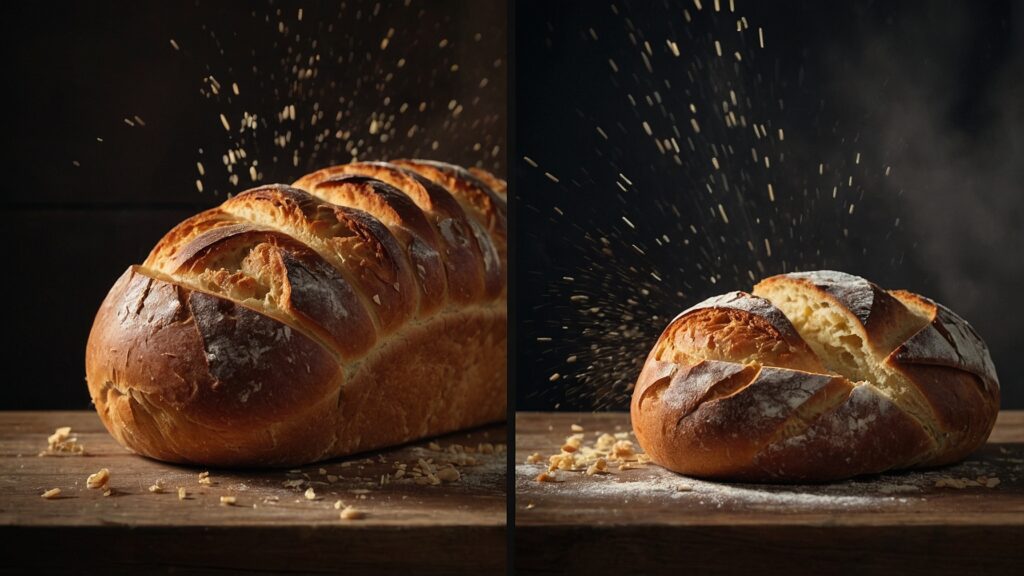
But with each failure came a lesson. I learned about the importance of protein content in gluten-free flours, the magic of psyllium husk for improving texture, and the delicate balance of liquids to dry ingredients. These challenges pushed me to become not just a better baker, but a more patient and persistent person.
The Ripple Effect: How Gluten-Free Rye Changed My Life
As I approached the end of my 30-day challenge, I realized that this journey had impacted more than just my bread-making skills. Here’s how my gluten-free rye adventure changed my life:
- Improved Health: The most obvious change was in my physical well-being. Gone were the days of feeling sluggish and bloated after eating bread. My energy levels soared, and those pesky digestive issues became a thing of the past.
- Newfound Confidence: Mastering gluten-free rye bread gave me a sense of accomplishment I hadn’t experienced in years. This confidence spilled over into other areas of my life, encouraging me to take on new challenges.
- Creativity Boost: The process of experimenting with different flour blends and flavor combinations awakened a creative side of me I didn’t know existed. This newfound creativity extended beyond the kitchen, influencing my problem-solving skills at work and even my hobbies.
- Stronger Connections: Sharing my bread-making journey opened up new conversations with friends and family. I found myself connecting with people over food in a way I never had before, swapping recipes and tips with fellow gluten-free eaters and curious bread lovers alike.
- Mindful Eating: Baking my own bread made me more aware of what goes into my food. I started reading labels more carefully and making conscious choices about the ingredients I use in all my cooking, not just my bread-making.
- Sustainable Habits: The process of making my own bread led me to think more about food sustainability. I started buying ingredients in bulk to reduce packaging waste and even began composting my kitchen scraps.
- Emotional Well-being: Perhaps most surprisingly, my gluten-free rye journey had a profound impact on my emotional health. The meditative process of kneading dough and the satisfaction of creating something with my own hands became a form of stress relief and self-care.
Sharing the Love: Building a Gluten-Free Community
As my 30-day challenge came to an end, I realized I didn’t want to keep this newfound knowledge to myself. I started a blog to share my recipes and experiences, connecting with other gluten-free eaters around the world. The community that grew around this shared passion was truly heartwarming.

I even started hosting monthly gluten-free baking workshops in my community. Watching others discover the joy of biting into a slice of homemade, gluten-free rye bread for the first time brought me immense joy. It was a reminder of how far I’d come and how much there was still to explore in the world of gluten-free baking.
Your Turn: Embarking on Your Own Gluten-Free Rye Journey
As I wrap up my story, I want to turn the spotlight on you, dear reader. Perhaps you’re where I was at the beginning – overwhelmed, unsure, maybe even a bit resentful of your new dietary restrictions. Or maybe you’re already on your own health journey and looking for some fresh inspiration.
Wherever you are, I invite you to give gluten-free rye bread a try. Start small – you don’t need to become a master baker overnight. Just pick up some gluten-free rye flour on your next grocery run and experiment.
If you’re new to bread making or short on time, I highly recommend the Zojirushi Home Bakery Virtuoso Plus Breadmaker. It takes the guesswork out of the process and produces fantastic gluten-free loaves. This machine has been a lifesaver on busy days when I still want fresh, homemade bread.
- Various healthy course settings include Multigrain, Whole Wheat, Rapid Whole Wheat, Gluten Free, Salt Free, Sugar Free and Vegan
- Double Kneading Blades thoroughly knead dough for superior results; Dual heaters on the bottom and lid of the bread maker promote even baking and browning
- Rapid courses allow you to bake a loaf of white or whole wheat bread in just 2 hours and 25 minutes
- Large, easy-to-read LCD display with convenient key code on lid simplifies course selection; RAPID SETTING: Use Rapid setting to have your loaf ready to eat in under two and a half hours
- Electrical Rating 120 volts / 700 watts.Cord Length:39 inch
Embracing the Gluten-Free Bread Adventure
Remember, this journey isn’t about perfection. It’s about progress, curiosity, and being open to the possibilities that can come from something as simple as a loaf of bread. There will be mishaps along the way (trust me, I’ve had my share of bread fails), but each one is an opportunity to learn and grow.
So, what do you say? Are you ready to rise to the occasion with me?
Here are a few questions to ponder as you begin:
- What’s one small step you can take today towards embracing a gluten-free lifestyle?
- How might creating your own bread impact your daily life and health?
- What’s a favorite bread from your pre-gluten-free days that you could try to recreate in a safe, delicious way?
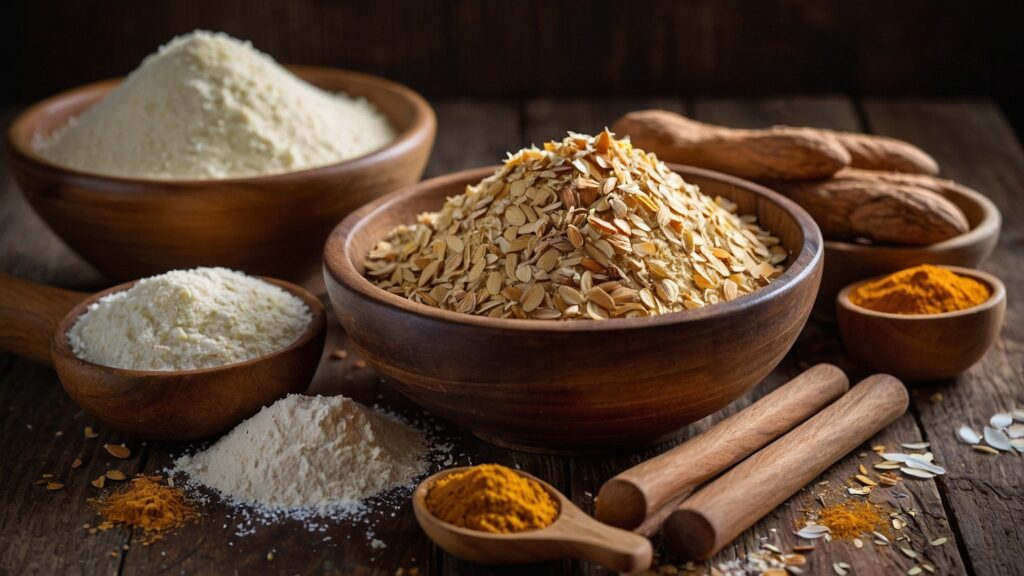
Remember, every big change starts with a small step. My journey began with a single bag of gluten-free rye flour and a willingness to try something new. Yours could start today.
As for me, I’m still on this gluten-free rye bread adventure. Each week brings new ideas, new flavors to try. Just yesterday, I experimented with a sourdough rye that had my taste buds doing a happy dance. Who knows what tomorrow’s bake will bring?
One thing’s for sure – I’m no longer mourning the loss of my old bread favorites. Instead, I’m celebrating the delicious, healthy, gluten-free creations that have taken their place. And let me tell you, life tastes pretty good from here.
Here’s to crusty, flavorful, gluten-free adventures ahead! 🍞✨
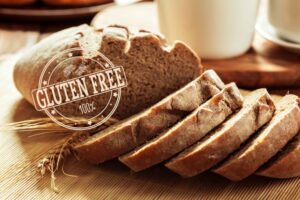
*We may earn a commission for purchases made using our links. Please see our disclosure to learn more.

